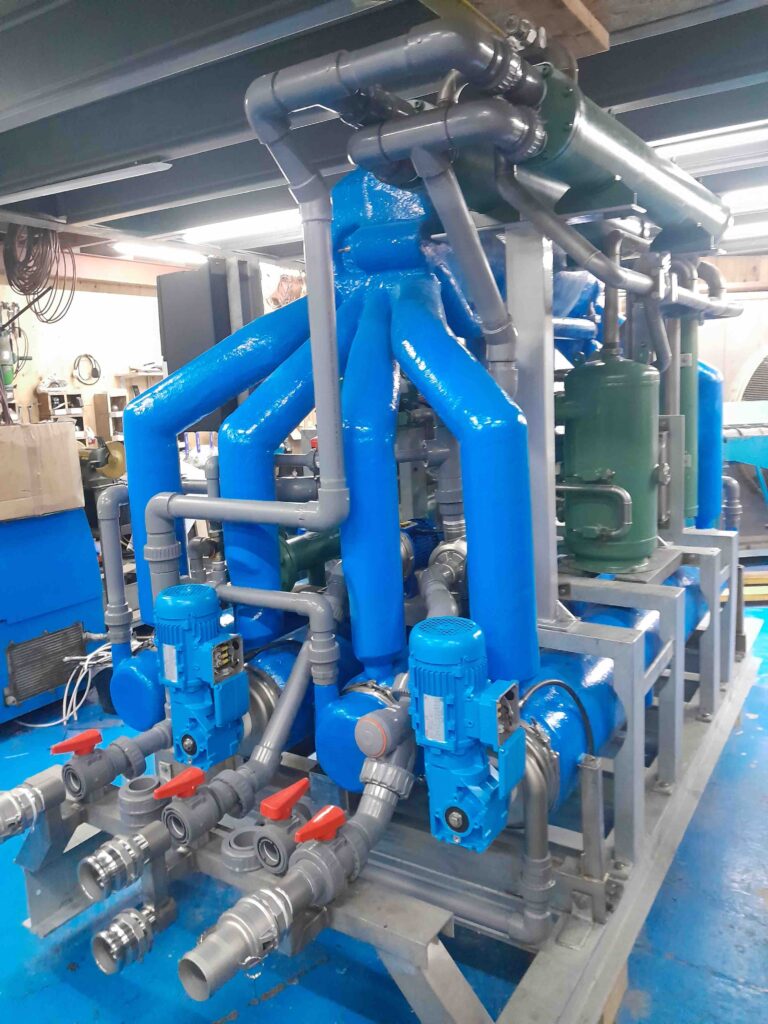Thornton-Cleveleys,, UK: Organic Heat Exchangers predicts large cost savings from its new energy storage system, EnergiVault.
The patented system is undergoing trials following installation at a pharmaceutical site in the north-east of England, where it has been integrated with an existing chilled water system.
The bolt-on cold thermal energy storage system adds a range of capabilities to industrial and commercial chiller operation, including electrical load shedding and load shifting, use of on-site generated renewables and the capability to benefit from grid-level support payments,Organic Heat Exchangers says.
It calculates that by operating EnergiVault alongside an existing chiller installation, savings of up to 69% can be realised against site cooling costs, with up to 64% reduction of CO₂ emissions.
Bob Long, executive chairman, Organic Heat Exchangers, said: “Energy storage for cooling can be one of the most effective methods of offsetting the effects on the environment of high loads during peak energy periods. EnergiVault is designed to optimise energy usage for chillers in industrial and commercial applications, and provide peak load cover if required.
“It generally integrates with an existing chiller but can also provide cooling on its own. Incorporating energy storage into a cooling system can potentially reduce indirect emissions, as without storage equipment has to run to meet demand, even when conditions are not optimal.”
EnergiVault consists of a charger and thermal battery. The charger’s ice crystalliser charges the battery by converting up to 60% of the building’s heat transfer fluid, typically a water/glycol mix, into spherical ice crystals a fraction of a millimetre in diameter, each surrounded by a film of organic material. This ice slurry acts as the phase change material, resulting in a massive increase of the surface area over which the thermal transfer takes place. The thermal battery is an insulated container, available in capacities up to 1MWh capacity units which are modular to meet demand. It has very high discharge rates, unlike solid ice technologies, and unlimited charge-discharge cycles, with zero battery degradation.
A cloud-based engine ensures peak savings in electricity and carbon. The battery is ‘charged’ by the refrigeration system using off-peak electricity, or locally generated renewable power, and then drawn down for use during high-tariff periods. Time of Use shifting is one of EnergiVault’s scalable control strategies, which allow integration with existing systems and live external data, enabling chiller optimisation, high and low heat grade heat recovery and solar panels (local energy generation), the company says.

In addition to accessing electricity at its cheapest, the engine also enables EnergiVault to take advantage of periods of low carbon intensity on the grid, when more of the power is produced from renewable sources, resulting in reduced impact on the environment.
Organic Heat Exchangers estimates a payback on investment of 1.8 years for EnergiVault when used alongside an existing chiller installation, or 1.5 years if bought instead of an additional chiller, once purchase, operation and maintenance costs are taken into account.







